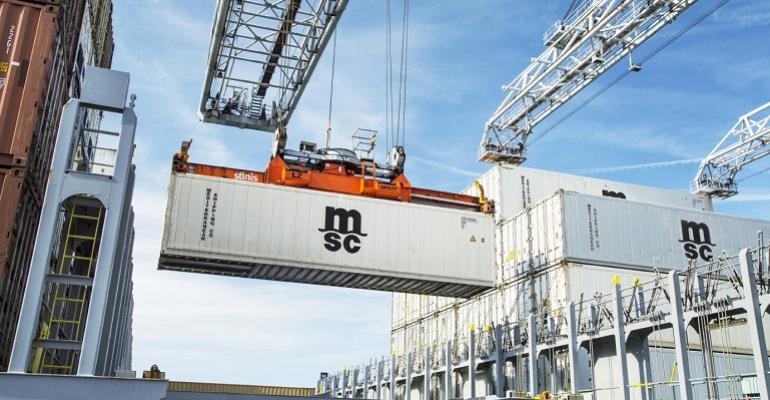Easyfresh, a reefer logistics provider, said in its May newsletter that the Red Sea diversions have been a “disaster” for European exporters, and the company quotes a March report by consultants Maritime Strategies International (MSI) to bolster this view.
“Following a solid 2023, where it expanded by 11%, the Far East-Middle East/India trade recorded a massive 34.5% year-on-year expansion in January MSI notes in the March edition of its Horizon Monthly Containerships report,” said the Easyfresh newsletter.
The growth of the Far East to Middle East and India trades saw volumes increase to treble the European volumes to the same region this year, from double the volumes in 2022, rising to 2.24 million teu from the Far East, up 16.4%, compared to an 11.8% decline in European exports, to 785,000 teu.
However, the MSI data pertains to all containerised freight, rather than just reefer cargo: “The Europe-ME/ISC EB trade recorded a collapse in January, with volumes standing at their lowest monthly level in eleven years,” said MSI.
Adding that this decline was “solely attributed to the Cape of Good Hope diversions”.
Middle Eastern and Subcontinent importers are trying to reduce European sourcing to avoid the long delays caused by the Cape diversions.
Importers are therefore, “increasingly sourcing from the Far East and elsewhere. Loaded imports from Oceania, Africa, and Latin America all jumped by 43%, 25% and 24% respectively year-on-year in January,” said MSI.
In May’s Horizon report MSI noted that March data had seen a “better than expected global container trade. Both liftings data and port throughput data confirm this.” While MSI’s global port throughput index stood at 105.35 in March, the seventh month of year-on-year expansion.
Reefer cargo is on an entirely different trajectory, however: “After a tumultuous year in 2023, the reefer sector has started 2024 on a stronger footing as healthy crops in the Southern Hemisphere have helped to lift growth. This trend is set to continue across 2024 as a whole, with a return to growth forecast for the sector after two years of declines,” wrote Drewry Shipping Consultants’ reefer analyst Malcolm Ramsay.
Drewry expects the reefer trades to increase exports, with seaborne reefer volumes rising 1% globally, year-on-year, while rates will continue to decline.
Ramsay told Seatrade Maritime News that there had not been a significant decline in European exports: “Some trade has obviously been affected, with some rerouting, but overall, the addition of new container capacity this year has largely helped mitigate this. If tightness returns of course, or there are significant changes in ordering / panic buying this could change.”

A Container Trades Statistics (CTS) spokeperson said: “It is still slightly too early to tell just how much of an impact the Red Sea crisis is having on reefer exports from Europe. So far, we are not seeing a major impact. There has been a small reduction in Q1 2024 of 10,500 down from 12,000 in Q1 in 2023. This doesn't yet demonstrate a significant trend.”
However, CTS added: “More interesting is a 16% jump in freight exports from Sub Saharan Africa to the rest of the world in Q1 2024, compared to Q1 2023. Typically this will be largely fruit.”
Nevertheless, volatility caused by the Middle East conflict did have an effect on rates, however, Xeneta’s chief analyst Peter Sand explained: “Red Sea disruption did make reefer rates go up by 35% in January to peak in early February, from where they have been falling ever since. Already in March, we saw that the market uncertainty (as measured by the spread) was back at where it was in December 2023.”
An analysis, by Peter Sand, of CTS reefer volumes since the pandemic highs of 2020 reveals a steady decline after the pandemic period: “The continued drop in reefer spot market freight rates isn't surprising as demand has been waning for a long time. The Chinese no longer have the problems with African Swine Fever as they did a few years back - so a lot of the frozen pork that left Europe for China has now left the market.”
Copyright © 2024. All rights reserved. Seatrade, a trading name of Informa Markets (UK) Limited.
Add Seatrade Maritime News to your Google News feed.  |

